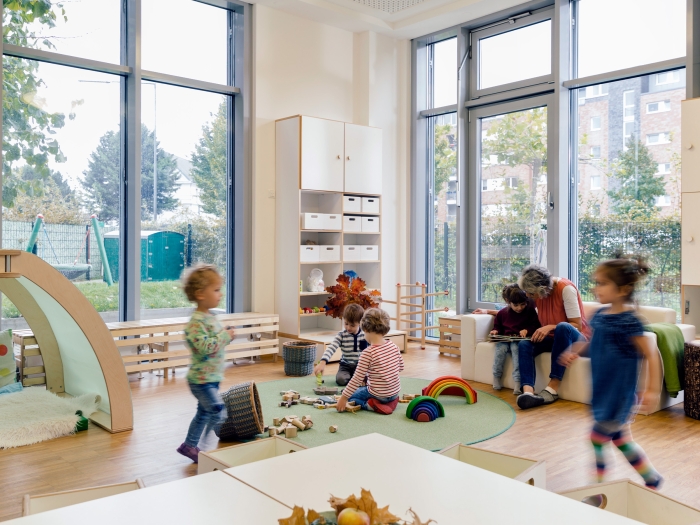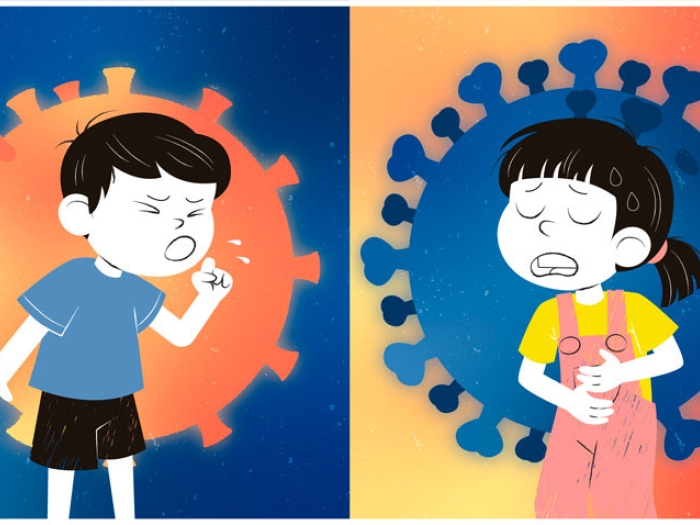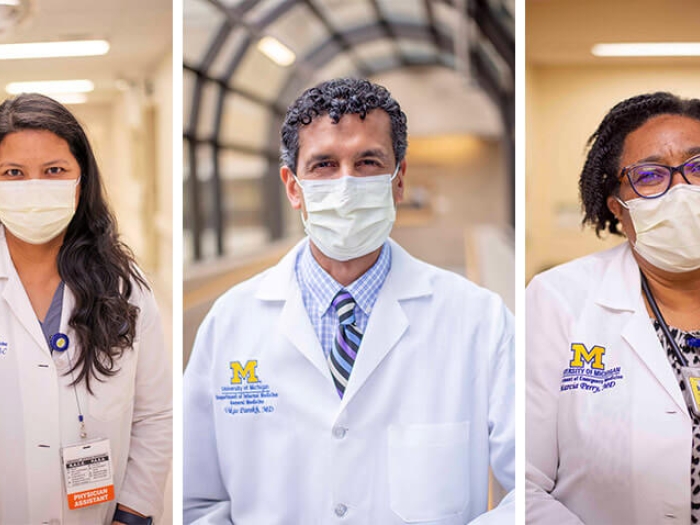Study examines the impact of flu, RSV and COVID-19 hitting pediatric emergency departments
8:52 AM
Author |

Sign up for Health Lab newsletters today. Get medical tips from top experts and learn about new scientific discoveries every week by subscribing to Health Lab’s two newsletters, Health & Wellness and Research & Innovation.
Sign up for the Health Lab Podcast: Add us on Spotify, Apple Podcasts or wherever you get you listen to your favorite shows.
With cases of respiratory illness climbing quickly across the nation, new research from experts at Michigan Medicine offers insight into how respiratory illness surges can negatively impact emergency care for children across a state.
Focusing on the ‘tripledemic’ of respiratory syncytial virus , influenza and COVID-19 infections that occurred last year, their results underscore the importance of all types of hospital emergency departments being prepared to care for sick children, especially when health systems become strained.
In this study, the authors examined more than 2.7 million ED visits in 2021 and 2022 across 25 Michigan EDs within the Michigan Emergency Department Improvement Collaborative.
The study takes advantage of the ability to pool data from this collaborative quality initiative supported by Blue Cross Blue Shield of Michigan and Blue Care Network as part of the Value Partnerships program.
The analysis shows that pediatric viral and respiratory emergency visits increased dramatically during the tripledemic, from September to December 2022.
In those months, such visits shot up 72% over the four prior months, and were 16% higher than the same period in 2021.
The state’s specialized children’s hospitals were hardest hit.
During the surge, wait times at children’s hospital EDs climbed above 4 hours for 8% of visits, total treatment times in the ED (also called length of stay) was more than 12 hours for 9% of visits, and more children experienced a return visit within 72 hours of ED discharge.
But the study also looks at what happened when children with these viruses went to EDs at general hospitals across the state.
Comparatively, wait times in these general EDs that see a mix of children and adults were typically less than an hour and fewer children experienced visits that lasted more than 12 hours.
“Pediatric readiness, an effort to ensure that all emergency departments have the appropriate resources, equipment, training, and policies, to provide high-quality emergency care to children, is essential to all hospitals and health systems,” wrote Alexander Janke, M.D., clinical instructor in the Michigan Medicine Department of Emergency Medicine and national clinician scholar at the U-M Institute for Healthcare Policy and Innovation.
“When viral illnesses surge across the state, like we had last winter, the impact varies across different EDs and hospitals,” he explained.
“The large children’s hospitals are the most crowded, but even small rural hospitals can have dangerous backing up of pediatric care at the peak of a surge.”
Prior research on pediatric readiness shows that mortality for critically ill children is reduced when EDs are properly staffed, have readily available equipment, and have plans for facility operations during surges like the one seen in 2022.
The current study highlights the need for all types of hospitals and EDs to be prepared to care for sick children.
At the height of the 2022 surge, the collaborative convened a virtual town hall to provide a forum for ED leaders to share ideas about how to ease the system strain of seasonal respiratory illnesses.
Representatives from across Michigan discussed ED operational challenges such as shortages of beds and nursing expertise, insufficient pediatric readiness, and suboptimal coordination between small EDs and transfer centers and identified approaches to mitigate them.
Michelle Macy, M.D., M.S., Janke’s co-author emphasizes the importance of strong collaborative relationships across EDs to ensure that children receive the right care while awaiting transfer to a pediatric ED or inpatient bed.
“Children’s hospitals are in a position to lead on coordination of pediatric care between EDs and hospital systems,” she said.
“Preparing in advance of pediatric surge events is crucial to optimize care for acutely ill and injured children, especially given the closure of pediatric inpatient beds in community hospitals and rural hospitals throughout the United States.”
Macy is an associate professor of pediatrics at Northwestern University and Ann & Robert H. Lurie Children’s Hospital of Chicago.
The study’s senior author is Keith Kocher, M.D., M.P.H., an associate professor of emergency medicine and learning health sciences at U-M who leads MEDIC and is a member of IHPI. Other authors are U-M emergency physicians and IHPI members Courtney Mangus, M.D., Michele Nypaver, M.D., Christopher Fung, M.D., M.S., and IHPI statistical analysis manager Neil Kamdar, M.A.
Paper cited: “Emergency Department Care for Children During the 2022 Viral Respiratory Illness Surge,” JAMA Network Open. DOI: 10.1001/jamanetworkopen.2023.46769

Explore a variety of health care news & stories by visiting the Health Lab home page for more articles.

Department of Communication at Michigan Medicine
Want top health & research news weekly? Sign up for Health Lab’s newsletters today!





